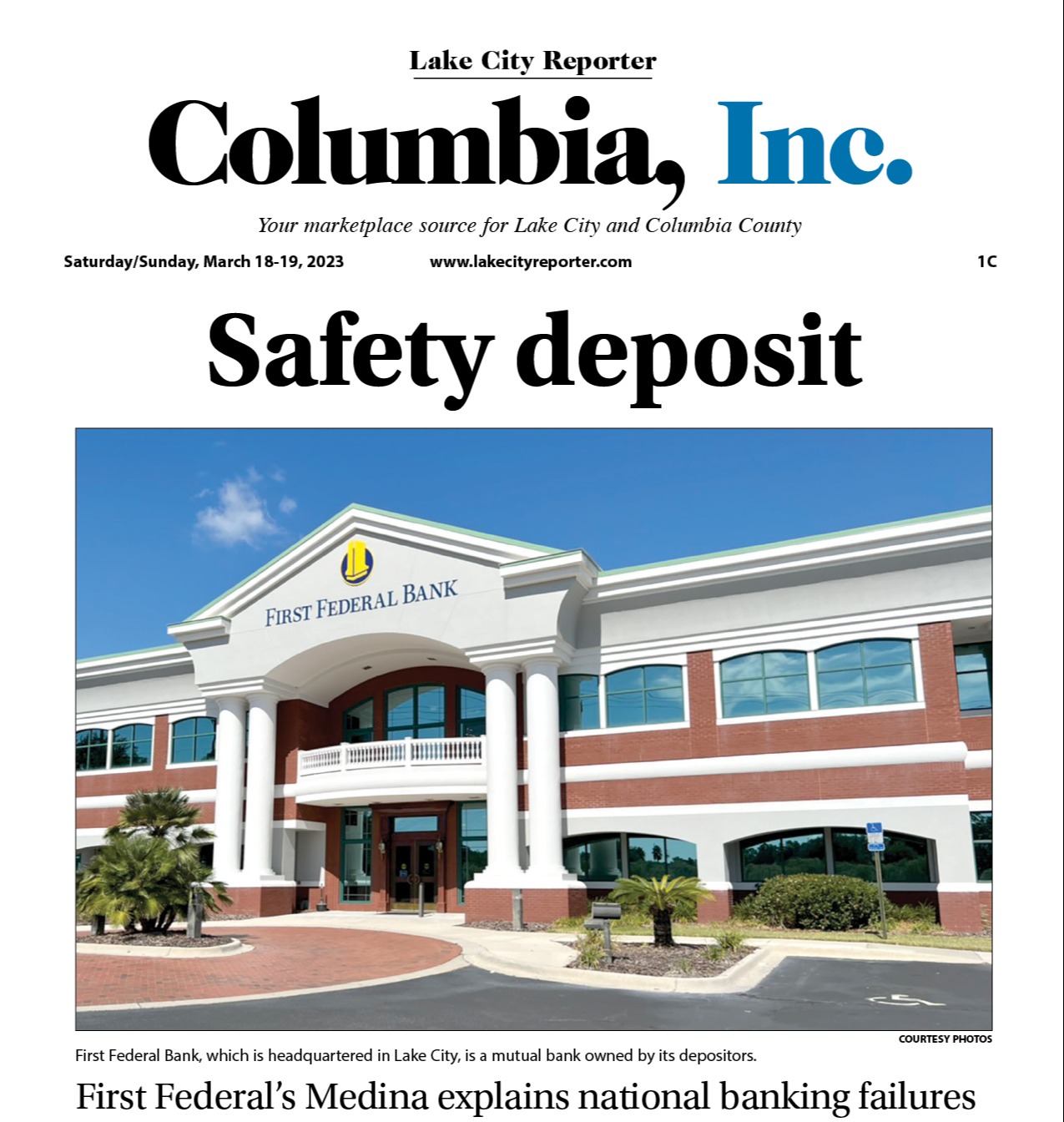Banking in the Middle of a Pandemic
You may not feel comfortable visiting your local branch right now. I understand. Don’t get me wrong; I miss seeing all of my customers! Limited lobby...
First Federal Bank will never call, text, or email you to ask for your online banking username, password, or security codes. If you receive a call from someone requesting this information, do not provide it. Call 877-499-0572 for assistance.
Manage your everyday finances with convenient accounts, flexible cards, and personalized service designed to fit your life.
At First Federal Bank, we offer flexible mortgage solutions for almost any situation, helping you secure the right financing for your dream home.
Business banking offers secure financial management, streamlined transactions, credit options, and tools to help businesses grow efficiently and sustainably.


Concerns over the recent demise of three banks has spread across the nation, including here in Columbia County.
Courtney Blackburn, First Federal Bank chief marketing officer, said several customers have come into the bank’s office and inquired about the possibility of a bank failure as well as the causes of bank failures.
“We’ve definitely had customers visit us and call and ask what that means and ask what’s the
impact,” she said Wednesday afternoon.
Blackburn said she spoke to John Medina, First Federal Bank president and CEO, who provided a list of the primary causes that resulted in the failure of the three banks.
According to Blackburn and Medina’s research, since 2008 there has been more than 500 banks that have failed.
“So it’s not new,” she said.
According to Medina, of the banks that have been in the news recently after they failed — Silicon
Valley Bank, Signature Bank and Silvergate Bank —two had the FDIC come in and shutter operations. Those banks — Silcon Valley and Signature — didn’t have enough cash reserves to support the demand when there was a run on the bank.
Medina explained this happened because they’re not small nor are they community banks. Silicon Valley was estimated to have roughly $209 billion and Signature Bank was around $118 billion in assets.
Another element that played a role in the banks’ failures was that both were “niche-focused.” Silicon Valley Bank had a lot of venture capital, both in deposits and investments on the lending side and took in a very substantial amount of Crypto-currency.
“With the recent concerns around Crypto and fraud, as well as being very heavily invested in technology, the high tech companies weren’t necessarily able to generate enough capital to help
them meet those cash demands,” Medina explained. “When there was a run because of that concern and all the Crypto deposits, they weren’t able to meet that demand. That effectively causes
a bank failure.”
Silvergate Bank, at $16 billion in assets, was the third that was closed, but it wasn’t shut down
by the FDIC. Medina said the FDIC, which provides insurance on deposit accounts of up to $250,000, said that 99% of banks are highly capitalized and in their estimate have sufficient capitalization to support their customer demands.
He said bank customers in Florida have a few options for checking out their banks if they have concerns. One check is to see if the bank is a qualified public deposit (QPD) institution,
where the bank takes in public deposits and is reviewed on a quarterly basis to determine
whether it meets certain capital requirements.
“It’s a completely independent oversight because that institution is holding municipal funds, so
that’s a quick way to look and just see is my bank QPD,” Blackburn
said.
Another to check is through Bauer Financial, an independent rating agency of banks. Bauer reviews a lot of factors, including capitalization, debt ratio, and diversification of the portfolio, when looking at financial institutions.
“For over 20 years, for example, First Federal has been rated one of the highest ratings possible through Bauer Financial,” Blackburn explained. “That’s a good, independent, rating agency
that consumers can look to.”
Consumers can also ask their banks what kind of liquidity they have available.
Medina said First Federal has more than $1 billion in liquidity available on a daily basis. First
Federal Bank has around $3.5 billion in assets.
Consumers can also enquire about what’s driving their bank’s objectives.
First Federal Bank is a mutual bank and is owned by its depositors.
Britt, Tony. "Safety deposit", The Lake City Reporter, March 18, 2023, p. 1C.

You may not feel comfortable visiting your local branch right now. I understand. Don’t get me wrong; I miss seeing all of my customers! Limited lobby...

Banking online means you never have to wait in line or rush before the doors close for the night. Online banking never closes, so you can...
A 2023 Federal Deposit Insurance Corporation (FDIC) survey reported mobile banking was the preferred choice for close to half of American households,...
Manage your accounts, make payments, and more.
Open an account with us.